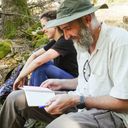Mar 21, 2023
EcoTree’s forests are insured against nature
In the event of a storm, fire, or natural disaster, our forests are insured.

Since two powerful storms in 1999 that most French citizens still remember, France has seen a strong storm, on average, each decade. We’re really feeling the effects of climate change, and we can reasonably estimate that a storm will eventually affect one of our forests. That’s why we’ve made sure to have an insurance that covers risks linked to fires, storms, natural disasters, snow, frost, ice, and hail in all our forests.
Insured against storms
In the geographic and climate zones where our forests are found, fires are not the main threat to be wary of. Since we currently only own land in France, Denmark, and the UK, it’s more likely that our trees will eventually be affected by ice, strong snowfalls, or an abrupt storm such as the ones France suffered in 1999, 2009, and 2010.
That’s why, in the event of unprecedented weather, we are covered by XLB Assurances, who protect against the risks of fire, storms, natural disasters, snow, frost, ice, and hail. We make sure to highlight this in our General Terms of Sale;
“If an exceptional situation, despite the insurance coverage, endangered the survival of the forest and the clients' investment and justified a partial or total exceptional cut under the conditions defined on pages 5 and 6, then the rights of investors would evolve in a pure right of claim on the product of the cut, which would be entirely transferred to the customers and not used for a repair of the forest.”
In 1999, two storms affected 6% of French forests
Everyone in France who can remember 1999, will remember the storms and the terrible damages caused by their winds. On the 26, 27, and 28th of December, Storms Lothar and Martin both hit France (in the north and south half of the country, respectively) with gusts nearing 55 m/s. In our lifetime, France never previously experienced such a storm. It affected 968,000 hectares of woodland in just three days, according to the Forest Inventory (IGN), provoking more than 97 million m3 of windfall (a low estimate).
The East and South West regions of France were the most affected, losing equal to 10 to 12 years of tree harvest in some places. Following Lothar and Martin, the National Forest Office (ONF) released a guide, from which we drew inspiration, to rebuilding forests after storms. In this guide, the ONF foresters recommended favoring natural regeneration for repopulating forests.
The exception of which are situations where it would be more prudent to plant new species that are better adapted to the new climactic conditions, or something in between: e.g., in the event of a lack of natural seedlings or if rival plants are present and preventing the regrowth of young plants.
Thanks to this approach, the ONF has reconstituted close to 100% of the destroyed forest populations in its charge after only two decades, with a success rate of 65% for natural regeneration. Sessile oak, black pine, and maritime pine were the main species reforested after the 1999 storms in public forests.
Storms Klaus and Xynthia cause damages
The damages caused by Storm Klaus (which hit the southwestern area of France on 24th of January, 2009 with strong winds reaching 52 m/s), then by Storm Xynthia (on the 27th and 28th of February in 2010) were less dramatic, but lead to dangerous floods. Storm Klaus destroyed a good part of the Landes Forest, the largest artificial forest in Europe.
In only a few hours, 220,000 hectares of maritime pines were knocked down or smashed to bits within a little less than 1 million hectares of forest. That’s about 5 years’ worth of crops (40 million m3) that were grounded in a single night. The scraps of wood needed to be quickly collected and sold at very low prices. The financial loss was great: the site required a decade of work and 500 million Euros worth of aid. It was financed 85% by the French state, the EU, and the local region itself. Over 250 million pines were replanted.
While our forests don’t care about money, these numbers remind us how the forests are fragile ecosystems. It’s absolutely necessary for us to conserve them and to take every step we can to combat climate change.
